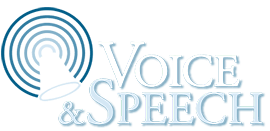Transcript
You’re in the spotlight, everyone is watching you, and you’re doing all the talking. It’s easy to feel it’s all about you. But if that’s the way you experience public speaking and presentation, you’re making a big mistake, one that leads to increased anxiety and ultimately a failure to accomplish your task.
Every speech or presentation is really about getting a message to your listeners. As the speaker, you play an important role, but it’s all on behalf of the listeners. If your audience doesn’t get the message or isn’t affected by it, you’ve wasted your efforts.
In this video you’ll learn three strategies to keep your focus in the right place when preparing your speech or presentation. In the next video we’ll consider ways to make your performance more audience centered.
Preparing for a speech or presentation typically involves taking everything you know about the topic, squeezing as much as possible into the allotted time, then verbally dumping it on your audience—perhaps adding slides. That tends to lead to boredom at best or confusion at worst. To prepare effectively, you need to start with your listeners in mind, then work your way backward.
Strategy #1 Clarify the message. It’s so easy to create content based on what you want to say. If you’re an expert, there’s always a lot to say. Instead, ask yourself, “What do they need to hear?” This helps you define the scope of your presentation and keep it very focused. If you try to tell them everything, they probably won’t remember anything. So be strategic.
Strategy #2 Find the hook. Consider the significance of your message for the listeners. Obviously, everything you say is important to you, but why do they need to hear this? What problem can be solved? What stress can be relieved? What ambition could be realized? If you start with why this matters to your audience, you’ll be more relevant and they’ll be more receptive.
Strategy #3 Plan the approach. Given the nature of your content and the make-up of your audience, what would be the most effective way to deliver this message? How do they need to receive it? Expressing it with words is the obvious—and easy—choice, but only a fraction of your audience, perhaps as few as ten percent, learns best by listening.
Would a picture or an image be more effective for the visual learners? Perhaps a hands-on activity would be good for the physical learners. Talking is the easiest and most obvious approach but not usually the best approach, and certainly not the only approach you should utilize.
When you communicate well, you’re getting the message to your listeners as effectively as possible. That takes some planning and careful preparation. When you’ve prepared, not just with what you know, but with your audience in mind, your speech or presentation will be clear, relevant and memorable.
If you found this information useful, please take a moment to like the video, post a comment or question, and above all, subscribe for upcoming videos related to voice training, public speaking and presentation.
Listener-Centered Presentation: The Preparation Stage
The context of public speaking and presentation can easily make you feel like it’s all about you. Of course, it’s really all about your listeners. Your listeners should be front and center the moment you begin preparing your speech, long before you approach the mic. Keeping that focus will help you create content that’s clear, relevant and memorable, and that’s crucial for any effective presentation.


